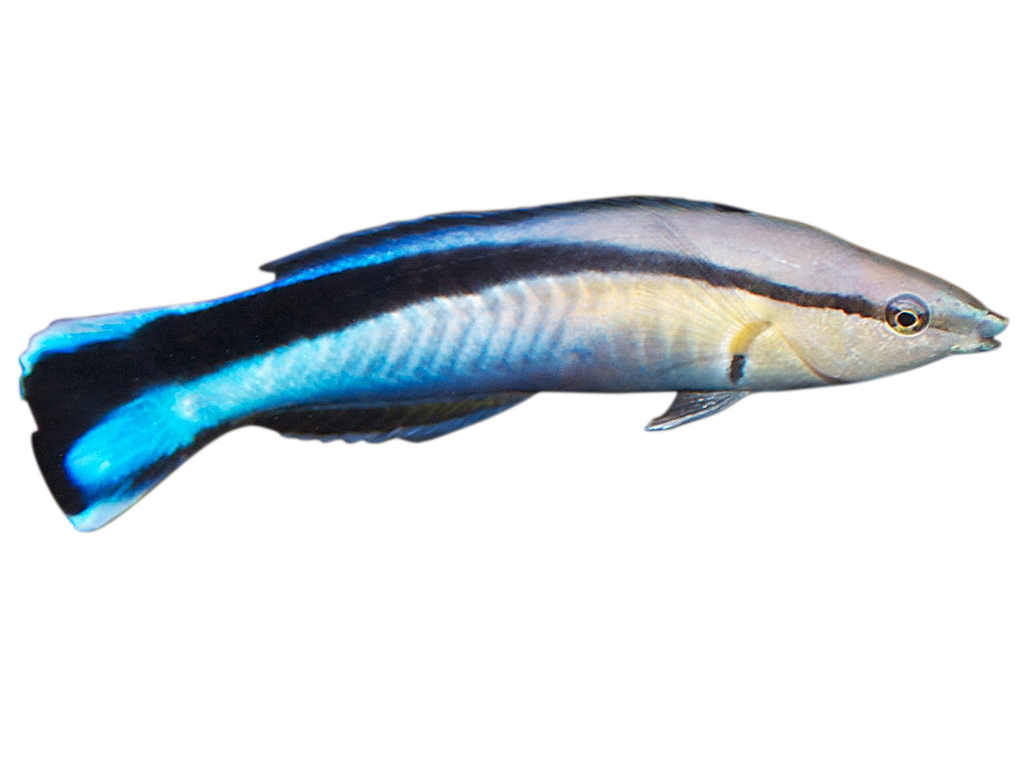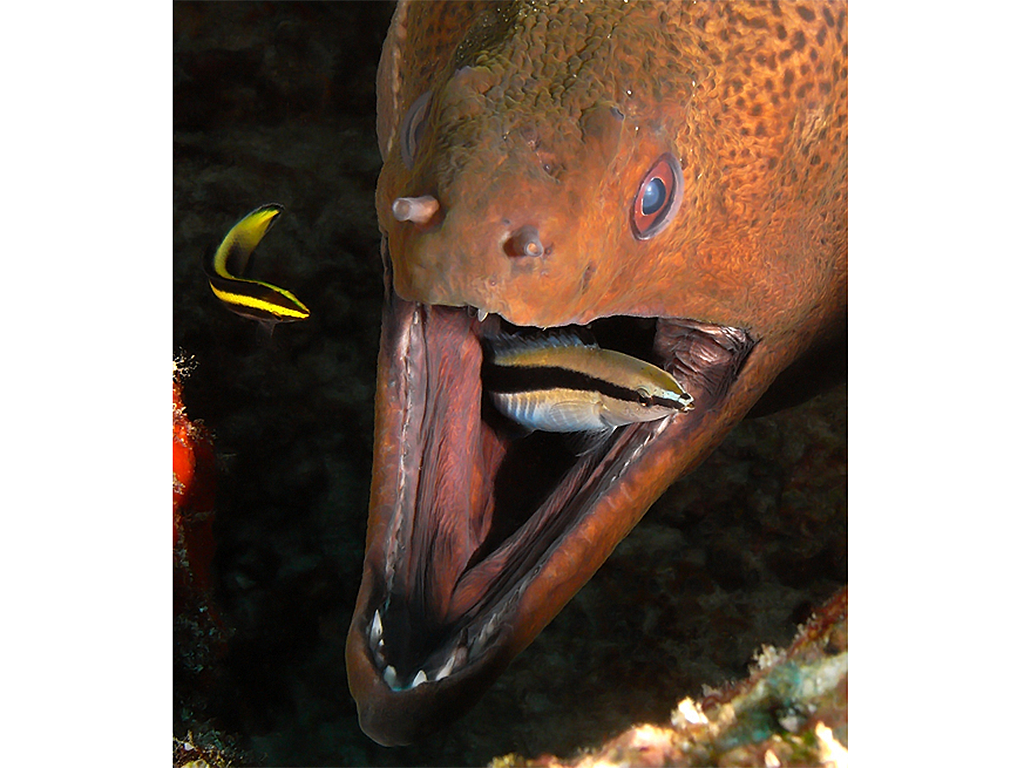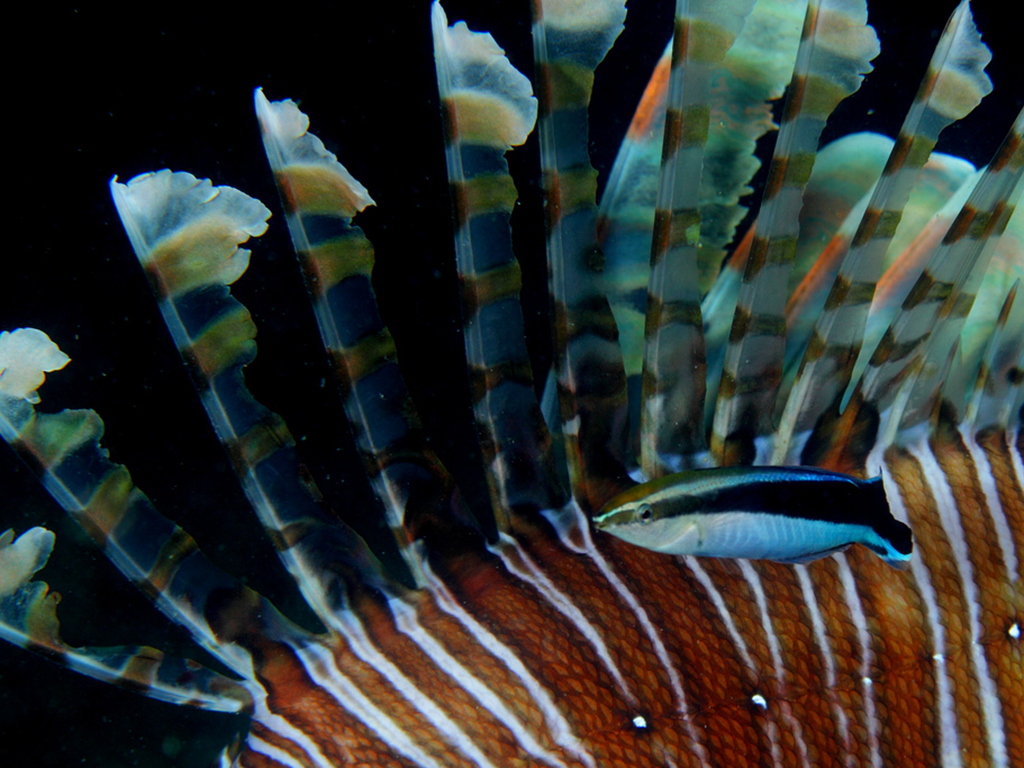Bluestreak Cleaner Wrasse
Labroides dimidiatus

Operates ”cleaning stations”
Bluestreak cleaner wrasse operates “cleaning stations” that other fish visit to be cleaned of parasites. A bluestreak cleaner wrasse will do a little swimming demonstration for the host fish that wants to be cleaned, and then it is time to do the job. The cleaner wrasse is even allowed to swim into the host’s mouth to pick parasites and dead tissue.

Photo: Philippe-Guillaume-CC-BY-NC
Works in teams
Sometimes one of these wrasses will actually bite the host fish but then the wrasse is quickly chased away by the other members of the cleaning “team”. Otherwise the risk is great that the host fish will swim away and never come back. Then the cleaning team will have lost its lunch forever.
The teams of cleaner wrasse can consist of a couple of adult fish or a group of adult females with one male. Sometimes a group of young cleaner wrasse start up their own “cleaning station”. If the male disappears from his group, the dominant female changes sex and takes his place as a male.

Photo: Klaus-Stiefel-CC-BY-NC
False cleaner fish bites
There is even a false cleaner fish (Aspidontus taeniatus), which looks like the bluestreak cleaner wrasse. It does not clean the host fish but takes a real bite and then swims away to hide and eat. Young fish are deceived by the false cleaner fish but older ones are not. The false fish’s mouth is in a different place so it is possible to tell the difference.
False cleaner fish mostly eat fish roe (eggs) and tube worms, so host fish are not often deceived. That is a good thing, or otherwise they would stop swimming to their “cleaning stations”.
Distribution worldwide

The Indian Ocean.
White marking = Distribution
Threat based on the Red List

Trade regulations
CITES: Not listed.